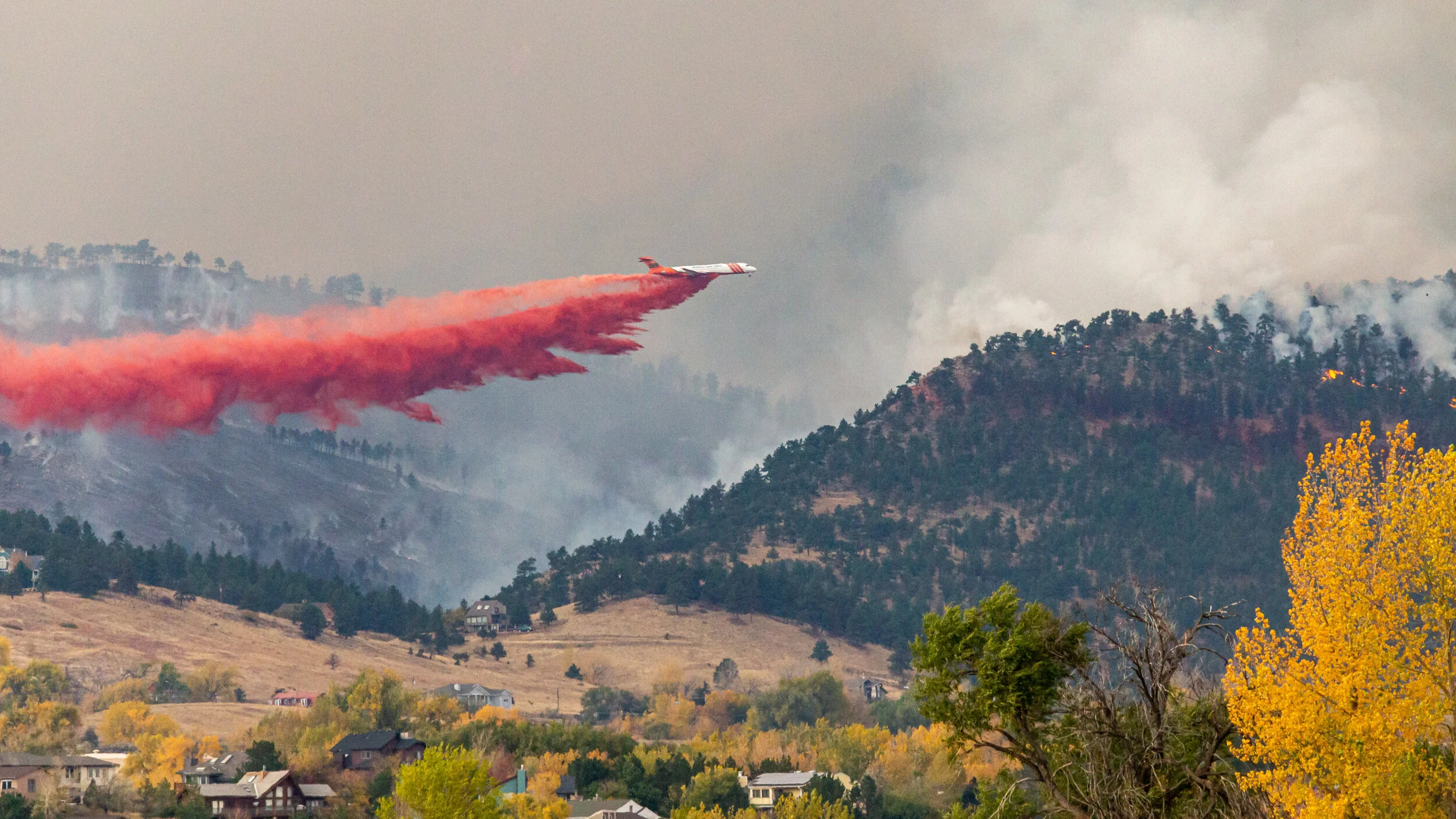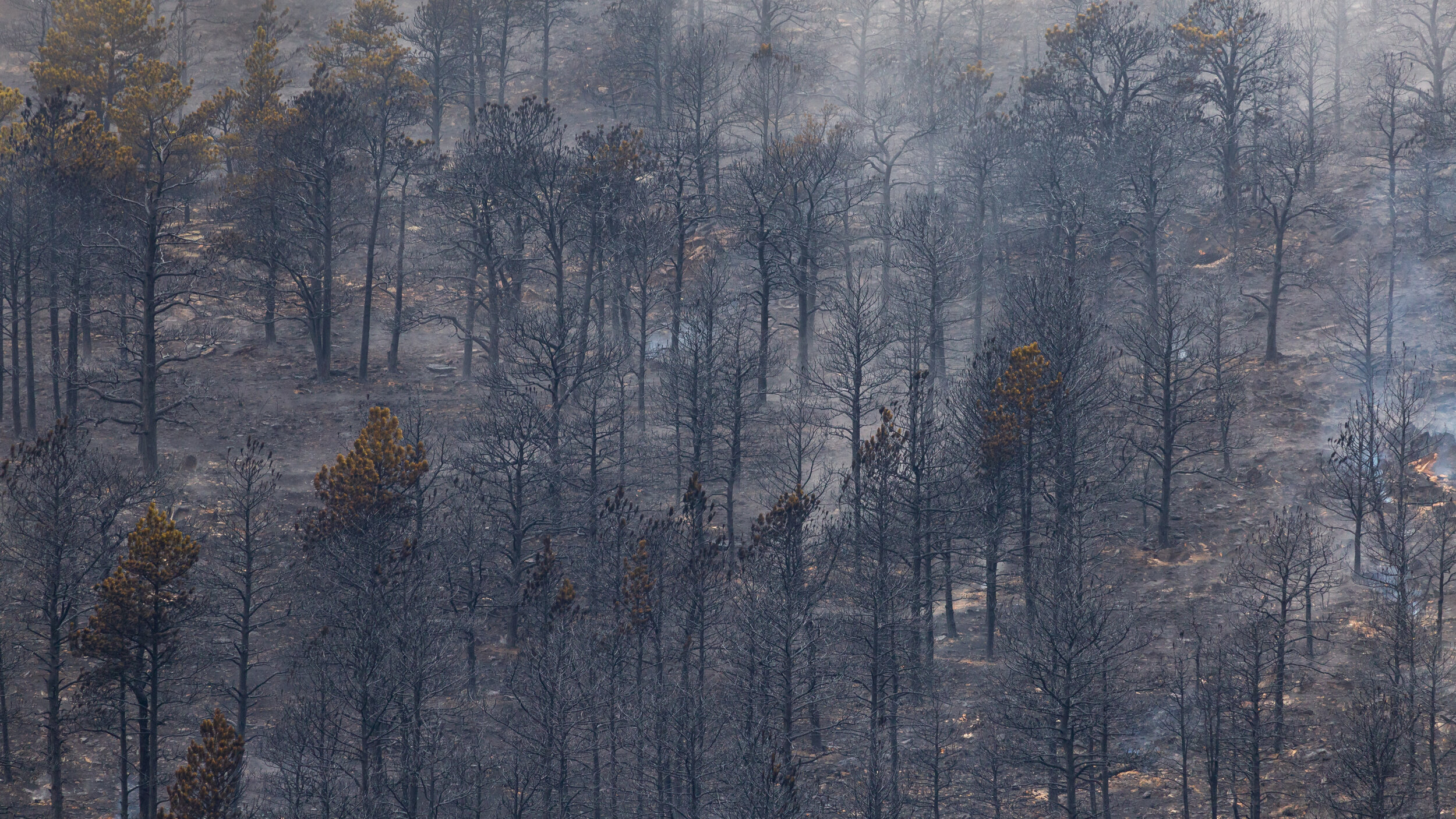If not for another, more infamous respiratory intrusion, 2020 in the Front Range would be remembered as the year of fire. Three major fires burned our eyes, lungs, and favorite forests. Stretches of the St. Vrain, Colorado, Cache la Poudre, and Big Thompson River (amongst others) were ravaged.
So ferocious are persistent were the Cameron Peak and East Troublesome fires that many of us dared not venture to favorite recreation destinations, instead choosing to sit and wait in our tightly sealed homes, gazing helplessly to the west, reading inciweb updates, and wondering when it all might end. In the end, we witnessed the first and second largest fires in Colorado state history.
I walked away from 2020 with so many questions about the fires. They mostly fell into 3 categories: 1) what happened and what might the effects be on the fishery? 2) how can we help clean up and restore? and 3) how can we prevent these events (at least locally) in the near and distant future? TU members care about the health of our watershed, about the fishing, but we also live and work here, so it’s critical we understand fire and how we can help with mitigation.
What happened?
Calwood Fire: started Oct 17, 2020
The largest fire in Boulder County history
“The Calwood Fire burned 10,113 acres, had 26 structures lost or damaged, and reached 100% containment on Saturday, November 14…The estimated cost of resources spent on the fires is $6.6 million.”[1]
East Troublesome Fire: started Oct 14, 2020
The second largest fire in Colorado history and most rapid-fire expansion
“When the sun rose on Oct. 22, hundreds of structures had burned … The fire would incinerate 193,812 acres according to the U.S. Forest Service…”[2]
Cameron Peak Fire: started August 13, 2020
The largest fire in Colorado history
“The fire burned through an area of 208,913 acres on the Arapaho and Roosevelt National Forests in Larimer and Jackson Counties and Rocky Mountain National Park.”[3]
What might be the effects on the fishery?
My uninformed bias about fires was that they were completely destructive to fish and fish habitat. Fortunately, this is not true. While fires can be disruptive to aquatic life, anecdotal accounts of the large Hayman fire in the South Platte watershed and leading research suggests otherwise. The summer 2021 TU magazine has a great focus on fire and I especially recommend you read Amanda Monthei’s article / interview about the effects of fire on fish with Dr. Ashley Rust.[4] A couple quotes stood out to me:
“They’ve adapted with fire – some fish may die [in fires] but most don’t” Dr. Rust
“Fires help rejuvenate the stream and literally just like the pine trees and fireweed and the plants that have evolved with fire, so have the fish in all of these Rocky Mountain systems.” Dr. Rust
“Humans have a tendency to want to intervene in recovery of watersheds that have been burnt over…but Rust insists that sometimes the best thing we can do is be proactive and ensure those systems are resilient before they are impacted by fire.” A. Monthei
In the article Dr. Rust conveys an interesting perspective, that other man-made issues such as restricted fish passage and erosion of soil and vegetation at abandoned mine sites may cause much more harm to fish after fire than otherwise. A focus on these issues before fires inevitably pop up is an investment in fish survival and health after afterward.
How can we clean up, restore, and prevent these events locally?
Our chapter is targeting a continued commitment to internal programs and partnerships that focus on fire restoration, managing forest health to mitigate fire intensity and effects, and water health monitoring.
It turns out the focus of post-fire intervention is preventing further damage to property and structures as well as degradation of water quality due to sediment and debris flow. This primary mechanism is aerial mulching, which was conductive extensively during 2021 in the Calwood burn scar.[5] Left Hand Watershed Center is a partner to Boulder County[6],[7]for the Calwood Fire recovery and they have engaged us with opportunities to 1) monitor stream health through their “Storm Chasers” program and 2) an opportunity to contribute funding and volunteerism for sediment control structures which directly affect the St. Vrain and Lefthand Creek drainages. We will be working on this in the very near future and recruiting volunteers!
There’s no question we must live amongst fire and that changing weather patterns and forest management are contributing to the potential for more and bigger fires. Much has been written about better forest management, i.e. shifting from fire suppression to actively thinning overgrown forests and conducting controlled burns. In a local example, BCPOS has reported that forestry treatments at Heil Valley Ranch resulted in significantly reduced burn intensity in those areas during the Calwood Fire. If these approaches are more broadly endorsed there will be continued opportunities for our TU chapter to participate to greatly reduce the impact of fire on the watershed.
Lastly, we have planned participation in the Adaptive Management at Scale plan managed by LHWC. Establishing more active monitoring sites that frequently collect data on ecological health will allow us to understand how acute events (such as fire, chemical spills, low water) affect our streams and fish. To introduce monitoring into neglected spots we’ll need to recruit strong hikers who like the outdoors and beautiful places (and fishing!)– I think we may have a few of those around!
[1] https://www.bouldercounty.org/news/investigation-into-the-cause-and-origin-of-the-calwood-fire-is-complete/
[2] https://www.cpr.org/2021/01/25/colorados-east-troublesome-wildfire-may-signal-a-new-era-of-big-fire-blow-ups/
[3] https://inciweb.nwcg.gov/incident/6964/
[4] Monthei, A. “It’s all Downstream: Fish and Fire with Dr. Ashley Rust.” Trout. Summer 2021, pg. 28.
[5] Hirt, D. Boulder County Parks & Open Space. “Calwood Fire Recovery Grant – Final Report.” Oct. 1, 2021.
[6] Stephan Reinold and David Hirt, Boulder County Parks & Open Space – Feb 25, 2021 update to Parks and Open Space Advisory Committee
https://www.youtube.com/watch?v=_mLpwxPWFAQ&t=7047s
[7] David Hirt and Sharla Benjamin, Boulder County Parks & Open Space – update to Parks and Open Space Advisory Committee
https://www.youtube.com/watch?v=DAWhmHv8LYM


